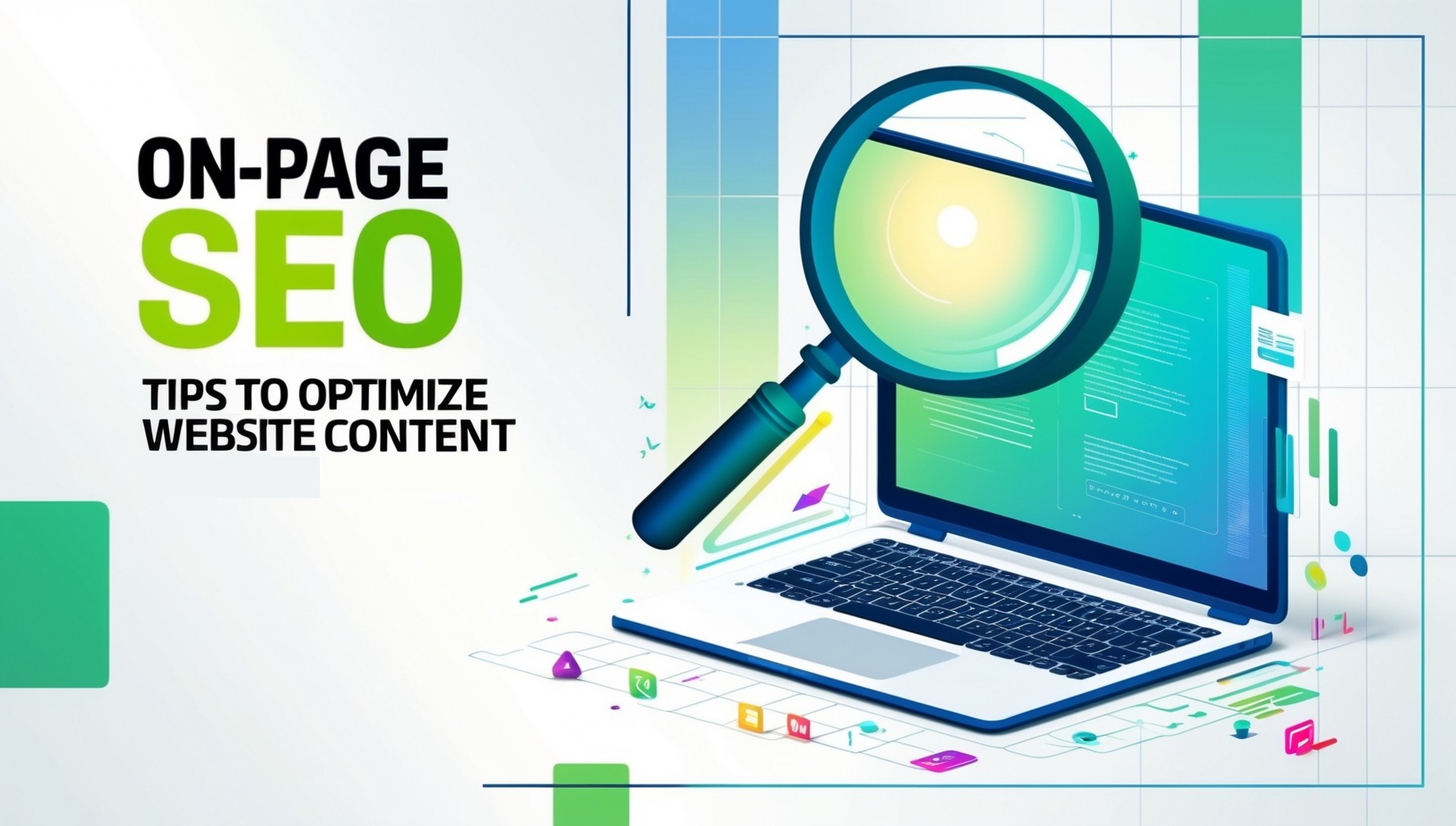On-page SEO is crucial for ensuring that your website content is optimized for both search engines and users. By focusing on various elements of on-page SEO and conducting a comprehensive SEO audit, you can improve your site’s visibility, relevance, and ranking in search engine results pages (SERPs). Here’s a guide to optimizing your website content for better search engine performance.
1. Optimize Title Tags
Title tags are one of the most important on-page SEO elements. They provide search engines and users with a brief overview of what your page is about.
- Include Target Keywords: Incorporate relevant keywords naturally within the title tag, ideally towards the beginning.
- Keep It Concise: Aim for a title tag length of 50-60 characters to ensure it displays fully in search results.
- Make It Compelling: Create a title that is both descriptive and enticing to encourage users to click through.
2. Craft Effective Meta Descriptions
Meta descriptions provide a summary of your page content and appear below the title tag in search results.
- Use Target Keywords: Include relevant keywords to match user search queries.
- Focus on Value: Highlight the unique value or benefits of the page to attract clicks.
- Keep It Brief: Write meta descriptions between 150-160 characters to ensure they are fully visible in search results.
3. Utilize Header Tags
Header tags (H1, H2, H3, etc.) help organize content and make it easier for users and search engines to understand the structure of your page.
- Use One H1 Tag: Each page should have a single H1 tag that includes the main keyword and describes the page’s primary topic.
- Subheadings (H2, H3): Use H2 and H3 tags to break down content into sections and sub-sections. Include relevant keywords where appropriate.
- Maintain Hierarchy: Ensure header tags follow a logical hierarchy, from H1 for the main title to H2, H3, and so on for subsections.
4. Optimize Content for Keywords
Keyword optimization helps search engines understand the relevance of your content to specific search queries.
- Keyword Research: Conduct thorough keyword research to identify relevant terms and phrases for your content.
- Natural Integration: Integrate keywords naturally into your content, avoiding keyword stuffing. Focus on readability and user experience.
- Use Variations: Include variations and synonyms of your main keywords to cover different search queries and improve content relevance.
5. Improve URL Structure
A clear and descriptive URL structure helps both users and search engines understand the content of your pages.
- Use Keywords: Incorporate relevant keywords into your URLs, keeping them concise and descriptive.
- Avoid Special Characters: Use hyphens to separate words in URLs, and avoid special characters or unnecessary parameters.
- Keep It Simple: Create URLs that are easy to read and remember, enhancing user experience and search engine indexing.
6. Optimize Images
Images enhance the visual appeal of your content but need optimization to improve page load times and search visibility.
- Alt Text: Use descriptive alt text for each image, including relevant keywords to help search engines understand the content of the image.
- File Names: Name image files with descriptive and keyword-rich terms.
- Image Compression: Compress images to reduce file size and improve page load speed without compromising quality.
7. Ensure Internal Linking
Internal linking connects your pages and helps users and search engines navigate your site.
- Use Descriptive Anchor Text: Use keyword-rich and descriptive anchor text for internal links to provide context and relevance.
- Link to Relevant Pages: Ensure that internal links point to relevant and related content to enhance user experience and content depth.
- Avoid Overlinking: Use internal links judiciously to avoid clutter and maintain a clean, user-friendly design.
While internal linking is crucial, it’s also important to understand the role of backlinks in SEO as they contribute significantly to your site’s authority and ranking.
8. Enhance Content Readability
Content readability impacts user engagement and SEO performance.
- Use Short Paragraphs: Break content into short paragraphs to improve readability and scannability.
- Incorporate Bullet Points: Use bullet points and numbered lists to present information clearly and concisely.
- Write in a Conversational Tone: Adopt a conversational tone and write in a way that is easy for your audience to understand.
9. Incorporate Schema Markup
Schema markup helps search engines understand the context of your content and can enhance search results with rich snippets.
- Add Structured Data: Implement schema markup for various content types, such as articles, products, and reviews, to provide additional information to search engines.
- Use Google’s Structured Data Markup Helper: Utilize tools to generate and test schema markup for your site.
10. Update and Refresh Content
Regularly updating and refreshing content helps keep it relevant and valuable to users.
- Monitor Performance: Track the performance of your content and identify pages that need updates or improvements.
- Revise Outdated Information: Update any outdated information and add new insights or data to keep content current.
- Repurpose Content: Consider repurposing content into different formats, such as infographics or videos, to reach a wider audience.
Conclusion
Optimizing your website content with these on-page SEO tips can enhance your site’s visibility, relevance, and user experience. By focusing on key elements such as title tags, meta descriptions, header tags, and keyword integration, you can improve your search engine rankings and attract more targeted traffic to your site. Regularly reviewing and updating your content ensures it remains valuable and effective in meeting user needs and search engine criteria.






